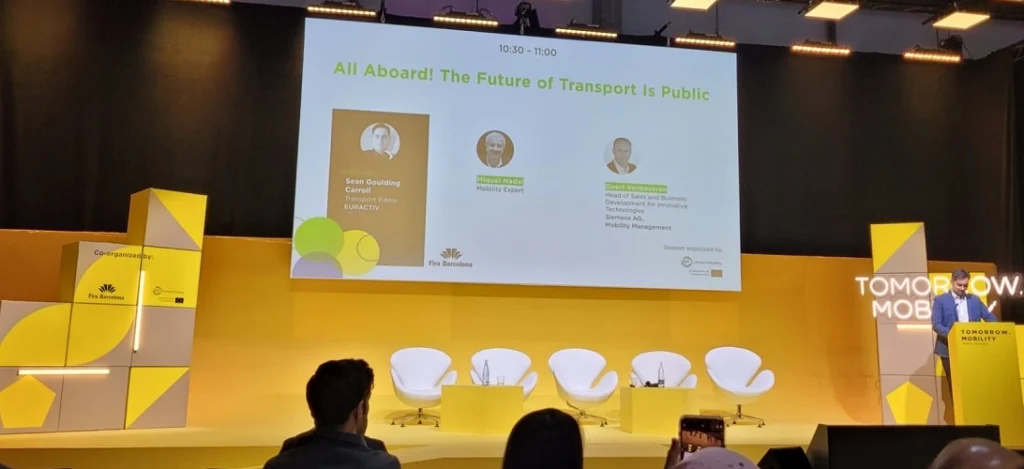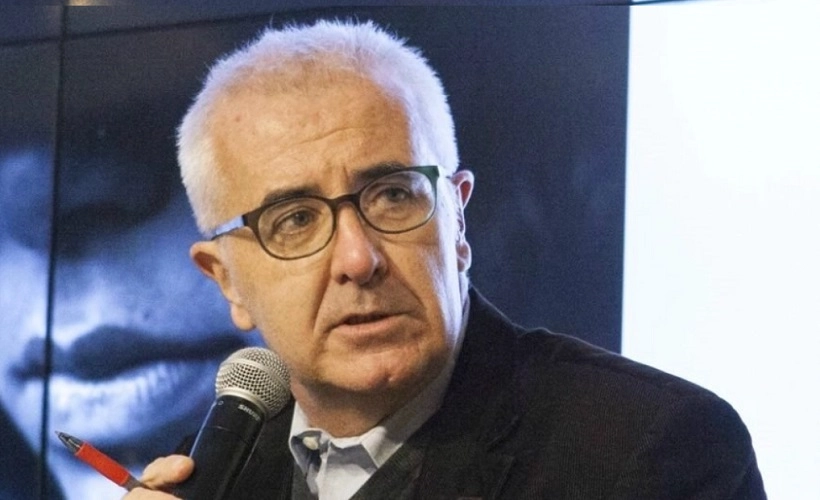During the Tomorrow.Mobility World Congress (TMWC), Miquel Nadal, a Mobility Expert, presentes an advance of his research on the importance of microsubsidies for promoting sustainable mobility.
Nadal highlights the potential contributions of microsubsidies by introducing specific and flexible incentives that vary depending on user types.
These subsidies could fluctuate based on factors such as the time of day, week, or month, travel distance, the route taken, or the presence of events, like football matches, among others.
This approach aims to reduce CO2 emissions caused by combustion engine cars, provided that authorities acquire electric buses.
As he details, they serve as a method to encourage users to switch from using private cars to a more sustainable transportation alternative, particularly in urban areas.
“This concept is not a revolution, but rather an evolution in public transportation,” Nadal notes.
Currently, subsidies are a reality in European cities and constitute a significant portion of passenger transportation revenue.
However, in most cases, these incentives are applied uniformly, meaning that fares are non-discriminatory, and the same amount is paid regardless of the route taken.
For this reason, the mobility expert argues that subsidies in the EU, while effective, are not efficiently managed.
This indicates that a substantial amount of resources is allocated to achieve limited results.
From a distribution perspective, Nadal observes that numerous user groups likely do not require such subsidies but still benefit from them.
Recently, the Dutch government has decided to offer free public transportation tickets for the Amsterdam metropolitan area and 13 other municipalities.
Beneficiaries include individuals whose income does not exceed 130% of the minimum income level, covering a total of 95,000 families in 14 municipalities in Noord-Holland.
These passes guarantee access to an hour and a half of travel on buses, trams, and subways operated by Vervoerregio Amsterdam, the entity responsible for public transportation in the capital region.
That’s why Nadal proposes microsubsidies with specific and flexible incentives.

Which European countries subsidize urban mobility?
Urban and long-distance buses account for over 6% of the total greenhouse gas emissions in the EU and over 25% in road transportation.
Thus, the European Commission has established various goals to reduce vehicle pollution.
In the first three quarters of 2023, sales of new electrically rechargeable buses in the EU increased by 31.5%, reaching 3,405 units and capturing a market share of 14.4%.
According to Transport & Environment, the Netherlands, Finland, and Norway lead in the registration of zero-emission urban buses.
However, a report by Greenpeace categorized the Dutch public transportation system as one of the most expensive and inaccessible in the EU.
The United Kingdom ranks second in this classification.
These findings align with those presented by Nadal during the Tomorrow.Mobility event.
According to the mobility expert, London provides only an 11% subsidy to public transportation, while Amsterdam offers a 34% subsidy.
In contrast, other European cities with higher incentives, like Berlin (51%) and Madrid (57%), have been identified as more cost-effective and accessible options for users.
Tallinn in Estonia, Luxembourg, and Valletta in Malta occupy the top three positions in the ranking.
It is worth noting that these three countries offer free or partially free public transportation services as part of their strong commitment to promoting sustainable mobility.
In the research conducted by Nadal and his team, preliminary results indicate that if the subsidies were generous enough, users would be willing to replace their private cars with public transportation.
In summary, the choice of urban transportation is influenced by various factors, including travel duration, comfort, and prices.
“Microsubsidies open the door to a much more efficient fare structure, and technology makes them a perfectly viable solution,” he emphasizes.








